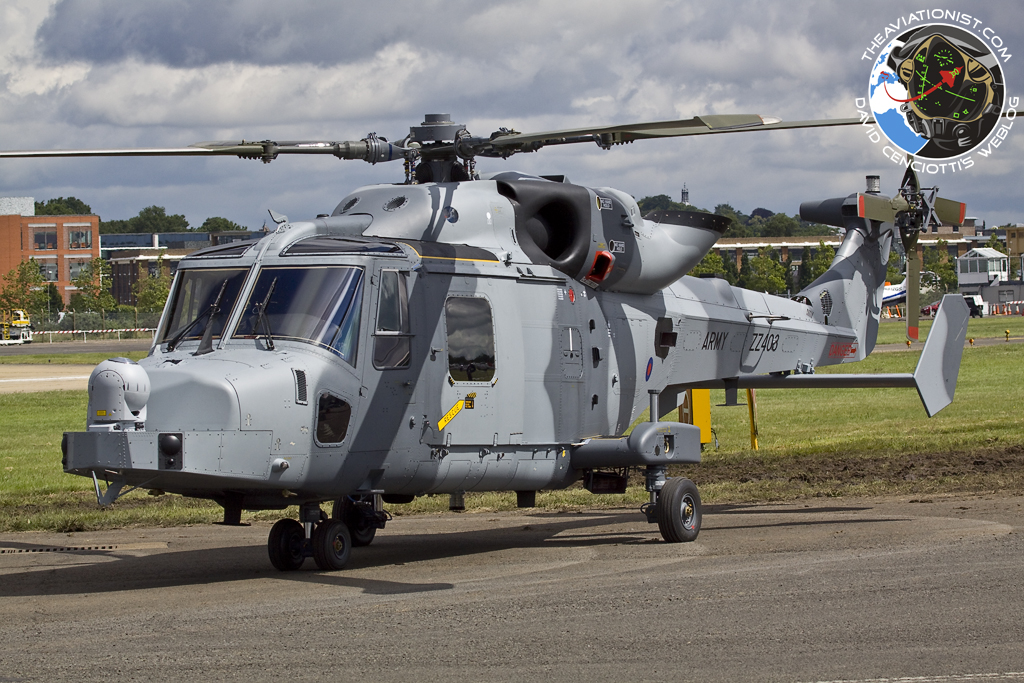The Lynx helicopter was the backbone of the British Army and the Royal Navy before it was replaced by the AW159 Wildcat.
On Mar. 21, 1971, the yellow prototype of the Westland Helicopters Lynx helicopter (registered XW835) took off from Yeovil, UK, on the first of two short flights of 10 and 20 minutes that marked the beginning of a long and successful career for the now-iconic helicopter. The aircraft was piloted by Chief Test Pilot Ron Gellatly, his Deputy, Roy Moxam, and Dave Gibbings the Flight Test Engineer, responsible for instrumentation management, stress data monitoring, and back-up observations.
The British Aerospace company which designed and produced the helicopter no longer exists: in 2000, it merged with Italian helicopter manufacturer Agusta to form AgustaWestland, and in 2016, it merged into Leonardo aerospace giant where it became the company’s helicopters division under the Leonardo Helicopters brand. The company has celebrated the 50th anniversary of the maiden flight of the Lynx that provides some interesting details about the chopper, and its replacement, the AW159 Wildcat.
“This landmark marks the 50th anniversary of Leonardo stepping into the leading position in this size/weight category in the helicopter market,” says the Leonardo press release. “The Lynx’s design and further development has met operators’ demands and changing requirements on land and at sea, which has led to the introduction of several variants in line with newly emerging technologies.”
More than 500 aircraft in this class have been built, serving operators worldwide.
While its main operators, the British Army and the Royal Navy, have retired the type, nine customers around the world, including the Brazilian Navy, Portuguese Navy, Royal Malaysian Navy, and South African Defence Force are still using the helo in various modernized variants for missions such as anti-surface warfare, anti-submarine warfare, battlefield, search and rescue, coastal protection, light utility amongst many others.
“The origins of the Lynx development started as part of an Anglo-French three aircraft programme. The basic Lynx development was carried out utilising five prototype aircraft, each of which was painted a different colour: yellow (XW835), grey (XW836), red (XW837), blue (XW838), and orange (XW839). The early flight test programme involved 13 aircraft. In March 1972, the fourth Basic aircraft flew for the first time and it included the first ‘Monobloc’ rotor head, this was the standard chosen for production.”
“The production rotor head would feature a central hub with four integral flapping elements forged from a single block of titanium, known as the ‘Monobloc’ head. […] The Lynx featured new technologies at the time including the British Experimental Rotor Programme (BERP) blades able to increase maximum speed and lifting capabilities, later adopted also for all Lynx/Super Lynx variants and for the AW101.”
Interestingly, the Lynx broke the world speed record on Aug. 11, 1986, as the so-called G-Lynx reached speeds of 249 mph/216 knots/400 km/h over the Somerset skyline, a record for the fastest helicopter that the type still holds today.

The Lynx was retired by the Royal Navy in 2017 while the Royal Army decommissioned the type in March 2018, when four Mk9 Lynx helicopters left RAF Odiham for a commemorative flight that took the formation over London as well as military bases and locations associated with the helicopter. Both services replaced the Lynx with the Leonardo AW159 Wildcat.
As explained in detail in an article about UK’s First Manned-Unmanned Teaming (MUMT) Trials last year:
The Wildcat, already in service with the British Army and Royal Navy, is a multi-role helicopter that can perform battlefield reconnaissance, command and control, transportation and force protection, as well as and shipborne helicopter roles, including an anti-surface warfare.
The AW159 is a much modified and updated helicopter based on the Lynx. It has a semi-rigid rotor head to give it high agility and is fitted with composite rotor blades utilising the same technology that enabled the Lynx to break the world helicopter speed record. Its pair of CTS800-4N engines, have exhausts which include built-in IR suppression to enhance survivability.
The cockpit features four large area (10” x 8”) displays and a fully integrated avionics suite and mission system. One of these was used to display the live video feed coming from the remotely controlled UAV. Infra-red and daytime color imagery is provided through a nose mounted Electro Optical Device which incorporates a laser range finder. Naval variants are also equipped with a 360 degree scan radar and weapon carriers for a range of torpedoes, depth charges and anti-surface missiles.
“The AW159 is not only key to the protection of today’s and tomorrow’s UK Royal Navy vessel fleet but is also in-service with export customers delivering multi-role capability for surface and sub-surface operations” Leonardo press release says. “For the UK Army it is an integral part of the 1st Aviation Brigade in the Strike Coordination and Reconnaissance role with utility across the spectrum of operations.”









